The 3 Common Legnths:
Long Scale 34″ – typical of most 4 string models such as J and P basses
Extra Long Scale 35″ – typical of most 5 or 6 string basses
Short scale 30.0/30.5″ – which are only seen on specialty or kids basses
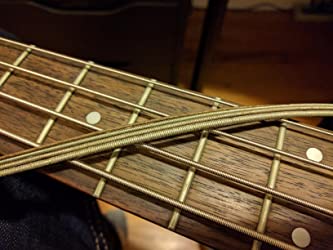
Bass strings play a huge role in the overall tone you get out of your bass. There are a lot of different bass strings from which to choose. Understanding the various aspects of bass strings will help you know what to buy and try out. And, it’ll hopefully make you sound better!

Every bass string is comprised of two strings – the core string and the winding string. The core string is a thick wire from one end of the string to the other. Around the core string another smaller string is tightly wound in a spiral all the way up the length of the core string. If you look closely at a bass string you will see little grooves all the way up the string. That is the tiny winding string. The winding string adds brilliance to the string’s tone.
The different types of bass strings usually refer to the string’s winding string. There are two main types of windings and some that fall in-between them. The two main windings are roundwound and flatwound.
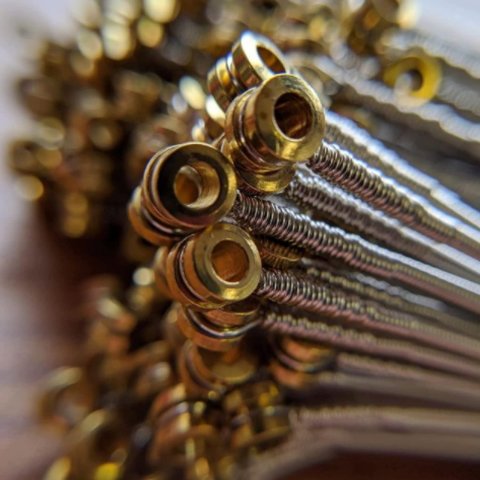
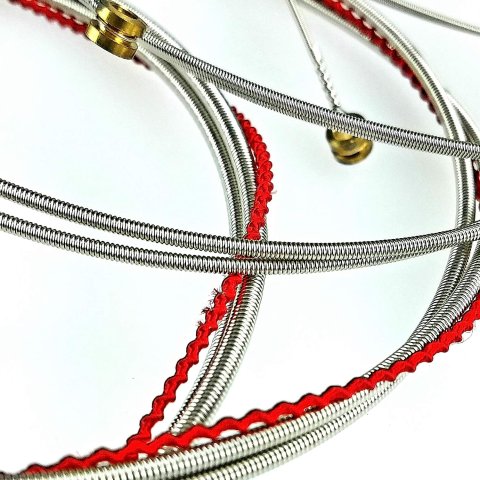
A roundwound string has a round shaped string wound along the core. Think spaghetti.
Roundwound strings are the brightest sounding of the two windings. These are the most commonly used type of string. They feel a little rougher because they have more grooves. There is also more finger noise because of all those grooves.
Roundwound strings are used in almost all styles of bass playing. And they are essential for slapping, popping and tapping where you want a nice bright tone.
When you first put them on you may find they are too bright. After a little playing, they will lose some of that zing. I like them after a week or so.

Flatwound strings have a ribbon-like winding wound along the core string. It’s like metal fettuccini.
Flats have a mellow sound to them. They feel smooth and silky. They have very little finger noise since they have fewer grooves up and down the string.
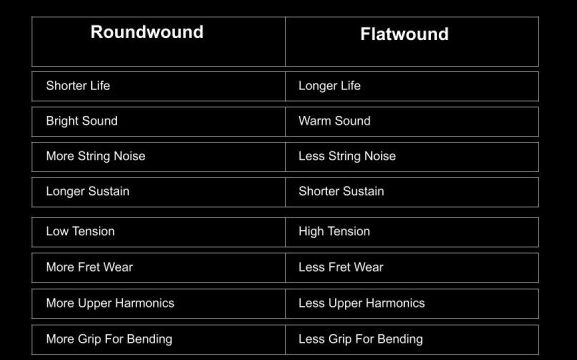
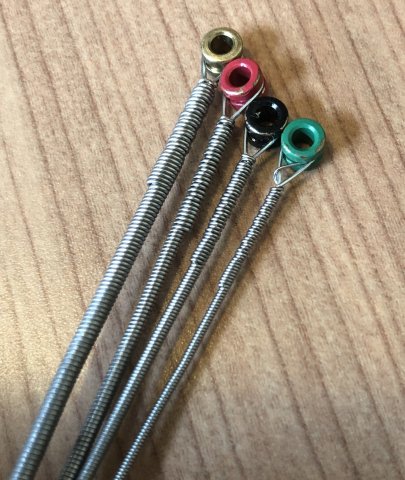
In-between rounds and flats there are a couple of other types of string. Both in terms of tone and under-the-finger feel they are in the middle. I’ve been playing some groundwound strings recently and I really like them. They have a good brightness and hardly any finger noise.
Gauge refers to the thickness, or diameter, of the string. The diameter is expressed in inches. A typical E-string is .105 inches in diameter. A typical G-string is .045 inches in diameter.
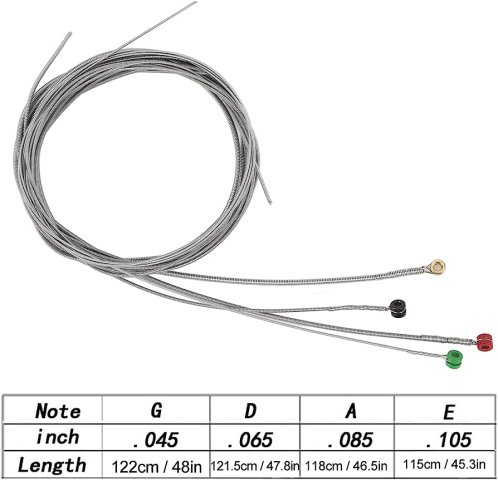
When it comes to string gauge, your tone and playability are affected. Lighter gauge strings are easier to play, but you lose some tone. Heavier strings have a great tone, but take more effort to play.
For a lower pitch you will need thicker strings. If you tune down, you may need heavier gauge strings.
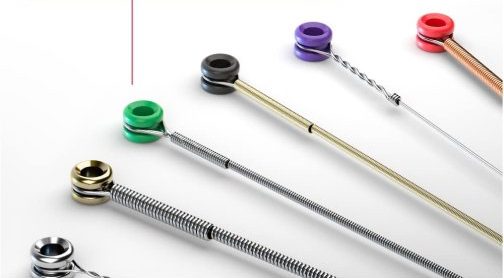
String gauge is a matter of personal preference. Try out different gauges to see which ones work best for your style of playing. If you play slap bass, lighter gauge strings are better.
Common Bass String Gauges:
Light – .040/.065/.080/.100
Medium – .045/.065/.085/.105
Heavy – .050/.075/.090/.110
Extra Heavy – .060/.080/.100/.120
The scale of your bass refers to how long it is from bridge to nut. Most basses are 34” scale. This is known as long scale. Some basses, like the Hofner Beatles bass and others, have short scale necks which are, um…shorter. Make sure you get the right scale strings for your bass – most likely long scale. If your strings are too short, you won’t be able to put them on your bass! If they’re too long, you won’t be able to wrap them around the posts because they’ll be too thick at the end.
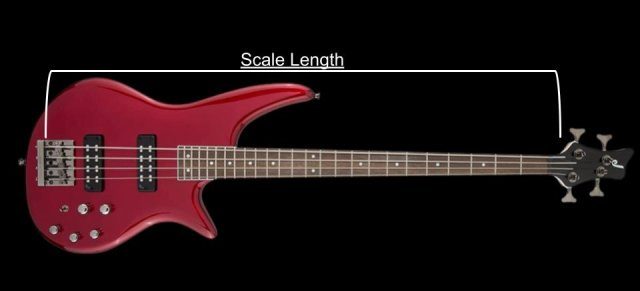
Long Scale 34″ – typical of most 4 string models such as J and P basses
Extra Long Scale 35″ – typical of most 5 or 6 string basses
Short scale 30.0/30.5″ – which are only seen on specialty or kids basses
Beneath the outer string winding lies an inner core, which is either a hex core or a round core.
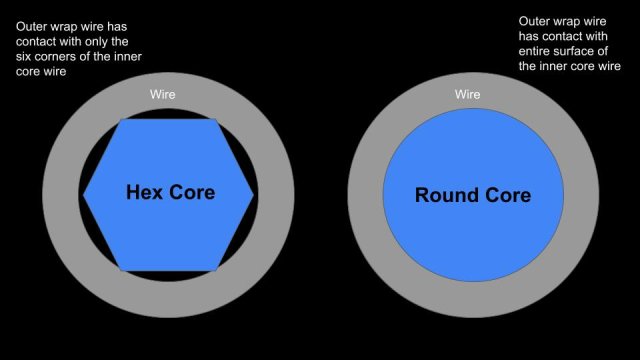
Round Core – which is the original core design, that has a tendency to cause some slippage between core and winding
Hex Core – which is a newer core design that minimizes slippage by digging into the outer winding, making them better for slapping and tapping.
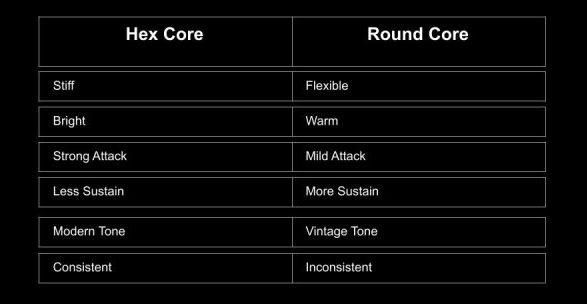
The most common materials used to make bass strings are: Nickel-Plated Steel, Stainless Steel, Pure Nickel, and Copper-Plated Steel.

Nickel-Plated Steel is most popular, with a good balance of brightness and warmth.
Stainless Steel has the brightest tone, the best corrosion resistance, and is ideal for slapping.
Pure Nickel has a warmest vintage tone, and is common to funk/jazz and fingerstyle playing.
Copper-plated Steel is known to produce a lot of overtones and harmonics
You may wonder what those silk wrappings are for. They don’t do a whole lot. They help prevent scratching a bit and may help prevent the winding from coming off the core string. Mostly, I think manufacturers use them for a little brand recognition. Just make sure the silk is not on the point of contact at the bridge or nut. If so, you may have the wrong scale length string for your bass.
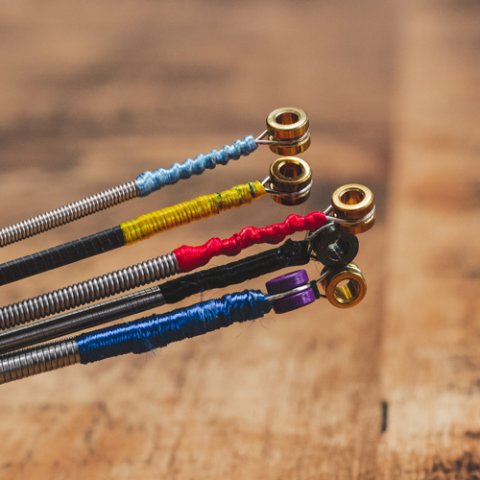
It’s impossible to tell anyone what set of strings to use. Finding the right strings is a long process of trial and error. The same set of strings can sound different on different basses and under different fingers. There are just too many variables to consider – playing technique, pickups, bridge, body, etc. You just have to experiment and find what you like.
Don’t use strings just because your favorite bassist endorses them. You’d “like them” too if you were getting paid to like them and got boxes of free sets.
The best advice is to experiment a lot until you find your favorite set. And when you get a new bass you might have to do it all over again.